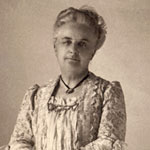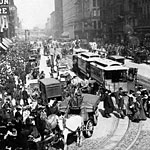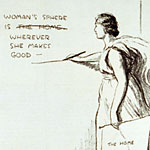- Why Deerfield?
- Incorporated in 1671, Deerfield is located in western Massachusetts' Connecticut River Valley on ground that for 10,000 years had been the homeland of the Pocumtuck people. Isolated on the edge of colonial settlement, 17th-century Deerfield was a particularly vulnerable participant in conflicts with allied French and Indian nations continuing into the 1700s. The town became famous for the February 29th, 1704 raid whereby much of the fortified settlement was burnt to the ground, and over 100 residents, including children, were forced on a 300-mile winter march to Canada.
The town's early 20th century Arts and Crafts activities were tied to remnants of Deerfield's Colonial past. Designs were often inspired by the early American objects in Deerfield's museum. Salesrooms were usually located in one of its 18th-century homes. The Arts and Crafts movement followed the town's transformation into a popular tourist attraction called 'old Deerfield.' The rise of old Deerfield was firmly rooted in the nationwide cultural phenomenon known as the Colonial Revival movement, and resulted from the diverse efforts of town residents to elevate and capitalize upon Deerfield's place in American history.

A Colonial Revival Vision
Old Houses: Summer Projects and Craft Shops
Films and Pageants, Portraying Colonial Heritage
- Deerfield's Progressive Impulse
- Occurring at a time when many Americans were working out what they hoped the nation would look like in the 20th century, the Progressive Era activities of Deerfield's Arts and Crafts artisans resonated with the reform-minded ideals of the larger national and international Arts and Crafts movement. In general, the Arts and Crafts movement sought to revive the craft traditions of an earlier time. Arts and Crafts artisans desired to create useful art objects featuring quality workmanship, natural materials and a carefully-considered use of ornament. Responding to the problematic social issues which had arisen alongside America's quick transformation into an industrialized nation during the 19th century, Arts and Crafts theorists (including Deerfield's own Madeline Yale Wynne) called for fundamental changes not only to design, but also to working conditions, worker compensation, and opportunities for women. Organized Arts and Crafts groups across the nation capitalized on localized resources and materials to offer, each in its own way, unique working models aligned to the movements' larger principles and concerns. Begun in 1896, the Deerfield Arts and Crafts movement was one of the first Arts and Crafts (so-called) village industries in the nation. It was active into the early years of the Second World War.

Mission Statements and Village Industries
Well-made Baskets for the dutiful consumer
That "band of industrious and brainy women"
- Design in Deerfield
- American Arts and Crafts proponents wished to integrate good design and quality construction into objects intended for the home. Deerfield's artisans were aware of this broad concern and were also influenced by national design trends. They kept in touch with nationwide Arts and Crafts activities through subscriptions to journals such as The Craftsman, The Studio and Handicraft, and attended lectures by prominent visiting Arts and Crafts leaders. A lecture entitled "The Principles and Applications of Design," introduced Deerfield artisans to the ideas of Harvard theorist Denman Waldo Ross. His art instruction manual A Theory of Pure Design: Harmony, Balance, Rhythm was published in 1907. In 1906, painter Augustus Vincent Tack presented a "very interesting talk on the general principals of Art and design, and used some Japanese prints and textiles to illustrate the beautiful considerations of color which could be obtained." Eventually Deerfield work displayed both the color harmonies and compositional strategies learned from Japanese prints. The Blue and White Society's embroideries further suggest that its leaders, Margaret Whiting and Ellen Miller, were well acquainted with the principles advocated by such design theorists as Arthur Wesley Dow, Denman Ross and Ernest Batchelder. The potter Chauncey Thomas, who worked and exhibited in Deerfield from 1909-1911, had studied with Arthur Wesley Dow at the Pratt Institute and with Charles Fergus Binns, the 'Father of American Studio Ceramics,' at the New York State School of Clay-Working and Ceramics. Their influence can be detected in Thomas' Deerfield pottery.

Arthur Wesley Dow and Designing Nature
The Pomegranate Motif
Click an item above to learn more about it.







